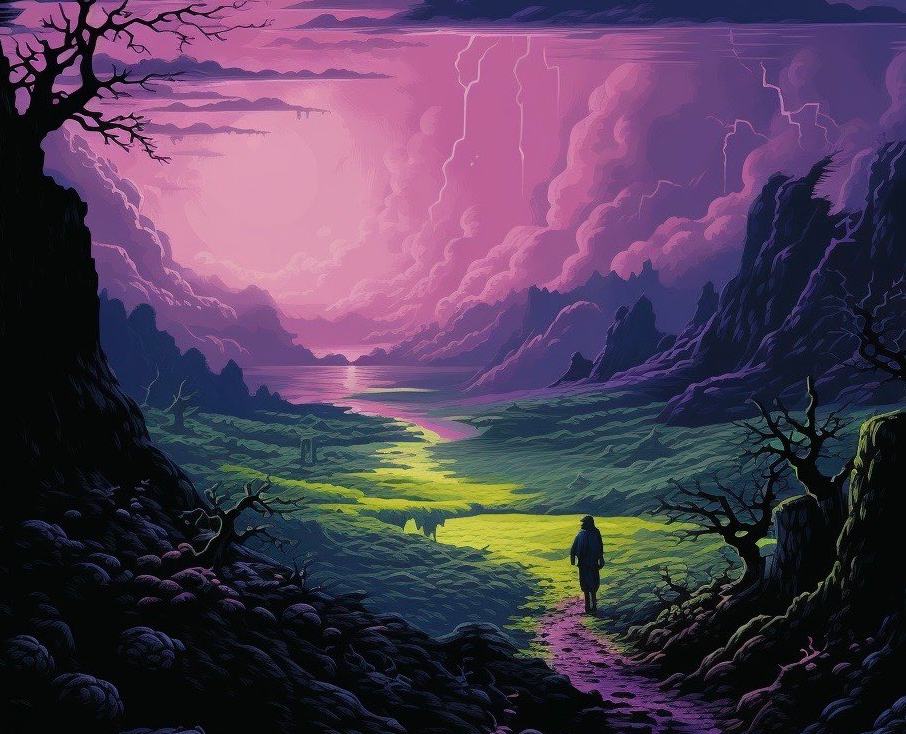As an artist myself, specifically one working toward a degree in design, the inner conflict of seeing and understanding the morality of Artificial Intelligence-produced work blooming into creative industries is a mammoth task.
A new argument arises: do we create for the result or the process? Is it even fair to call it wrong? A method of visualisation that wreaks no havoc on our mental energy? If the AI-produced cover of ‘All I Want For Christmas Is You” by Toad teaches us anything, it is that humans are unashamedly fascinated with making weird and wonderful things come to life. For those who want to see ideas stuck in their heads in a visual form, we’ve never been more capable, and so these questions warrant responses. From trialling both methods, questions surrounding artistic legitimacy answer themselves – though it’s somewhere between both extremes. Human art represents a form of expression and conversation where AI engines serve a practical purpose – creation seems evermore integral to art over audience perception.
AI may bridge the gap for those who need assistance rather than replacement. We need to remember that art fields have a rich history of exclusionary practices and that even today, the majority fall into the category of ‘non-artists’. It feels so intrinsically human to seek creative outputs that are devoid of effort or draining of mental energy for those who seek to create for themselves rather than work commercially. Art consumers will need to decide what they love about art, but this might be the push needed to get the public more critical. AI Art is the new modern art, primarily critiqued by casual observers for its commonly believed ease of production, yet talked about so prolifically that it may deserve its space in exhibitions.
The broader debate is a wild west of opinion. Earlier this year, famed electro-pop producer and singer Grimes unveiled the AI-powered voice engine Elf. Tech under the tagline “Welcome to the light ages” where users can generate vocals from the singer herself to use on their commercial products for a 50-50 royalty split. Oh, and Grimes herself has requested we “be tasteful” though – “baby murder songs” and a “Nazi anthem” are off-limits, according to the singer. The accessibility for bedroom artists to essentially collaborate with their idols welcomes a new age of a more level playing field than ever.
AI fills a void that individuals haven’t made, feeding cheap thrills In temporary wonder from those amazed at its capabilities. The elusive engines behind programs like Midjourney are understood to use existing media to understand the world, in a sense, an amalgamation of everything we know and have created so far. These engines can, arguably, produce, and perhaps build upon, an infinite number of artist-made resources to produce a single artwork.
This brings about more complex arguments which are not as new as we seem to think. Software like Illustrator and Procreate, also powered by coding to be as accessible to a new age of digital artists. Though, of course, the difference here is user interaction. With Procreate, even if it is an Apple pencil you’re dragging over a digital screen, that screen remains blank until you get to work. For MIT News, Zach Winn stated that we make a mistake in how we anthropomorphise the technology, implicitly suggesting these systems exhibit human-like intent, agency, or self-awareness. An argument can be held for whether or not these technologies can even be labelled as genuine examples of AI, where irregular, more human responses are encouraged through extensive coding to give these engines a false equivalence to human thinking.
We are still at a standstill on the brink of one question: is it morally ethical to use AI commercially in place of human creatives? The answer is a muddled one – can we expect businesses to cut costs if a task can be done with one pay-check less? The issue is that the monetary value within illustration and graphic industries is at risk of becoming financially unviable. Again, it seems that artificial intelligence will likely widen the gap between employed and self-fulfilling practice. Commercial industries are already being called out for the dead behind the eyes, bland, false-comforting art styles we see on every overtly friendly banking website. Capitalism is already out of touch with creative practices, and so an abandonment of creatives feels unsurprising.
Artificially produced art may become one of many unstoppable AI-powered forces within capitalist industries as they demise under their own exploitative core values. This can strengthen our appraisal of human, creative thinking in all areas. So, is AI art as human as it gets? No, not at all. However, the obsession with these technologies tells us a lot about the human instinct to visualise.
Image created by Tommy Manning.

